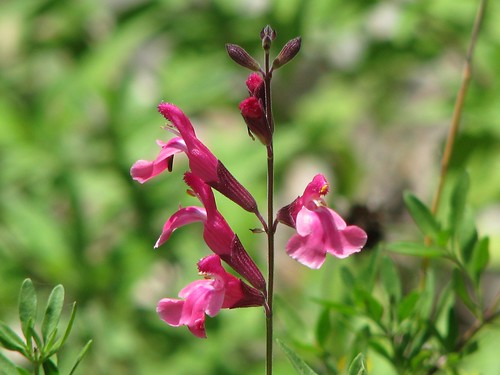Housewarming Flowers [183/366]
Image by timsackton
Day 183.
The past ten days have been completely crazy. First, I was traveling, at a conference in Dublin for a week. Then, two days after I got back, we moved. In theory it was an easy move - just one floor up, from the downstairs to the upstairs of the two-family house we live in. However, the fact that renovations are still ongoing in our new apartment added a certain degree of difficulty. Still, we are now mostly as settled in as we can be for now. In the right light, and with a pretty bouquet of flowers my sister brought us, it looks like home.
I am slowly getting caught up with the rest of my life, including digging through the several hundred pictures from Dublin and getting caught up with posting. With any luck, tomorrow I will have some time to get a little caught up with what I've missed on Flickr.
Today is also the half-way point of this 366 project! Congrats to everybody who has made it this far.
Taken Jul 1, 2012 in Somerville, Massachusetts, United States
¹⁄₆₀ sec at f/5.6, ISO200, no flash.
Lens: EF50mm f/1.4 USM @ 50 mm
Picture A Day December 15, 2010 - Green Lynx Spider (Peucetia viridans) at Devil's River SNA
Image by mlhradio
Apparently this is a fairly common spider throughout the southern United States, but this is the first time I recall seeing the colorful spotted Green Lynx Spider (Peucetia viridans) on the top of a flowering bush at the Devil's River State Natural Area in west Texas.
Find more photos from my 2010 Picture a Day set at: www.flickr.com/photos/matthigh/sets/72157620610035860/
You can also view my 2009 Picture A Day set that started it all at: www.flickr.com/photos/matthigh/sets/72157625855768121/
Picture A Day November 5, 2010 - Pink Autumn Sage (Salvia greggii) at Kickapoo Cavern
Image by mlhradio
Flowers of the Pink Autumn Sage (Salvia greggii) at Kickapoo Cavern State Park in southwest Texas. Contrary to the name, the flower blooms throughout the Spring, Summer and Fall, and also can be found in all different colors from cherry red to light apricot. The plant is native to the southwest Texas and Chihuahua Desert region.
Find more photos from my 2010 Picture a Day set at: www.flickr.com/photos/matthigh/sets/72157620610035860/
You can also view my 2009 Picture A Day set that started it all at: www.flickr.com/photos/matthigh/sets/72157625855768121/
Close up of fruits of Western Horsenettle, Solanum dimidiatum ....
Image by Vietnam Plants & America plants
Taken on November 26, 2011 in Waco city, Texas state, Southern of America
Vietnamese named : Cà dại lá gai
Common names : Western Horsenettle, TORREY'S NIGHTSHADE.
Scientist name : Solanum dimidiatum Raf.
Synonyms :
Family : Solanaceae / Potato family . Họ Cà
KingdomPlantae – Plants
SubkingdomTracheobionta – Vascular plants
SuperdivisionSpermatophyta – Seed plants
DivisionMagnoliophyta – Flowering plants
ClassMagnoliopsida – Dicotyledons
SubclassAsteridae
OrderSolanales
GenusSolanum L. – nightshade
SpeciesSolanum dimidiatum Raf. – western horsenettle
**** plants.usda.gov/java/profile?symbol=SODI
**** ucjeps.berkeley.edu/cgi-bin/get_JM_treatment.pl?7625,7682...
Perennial 3–8 dm, from rhizome, little-branched; prickles slender, yellowish; hairs stellate, some short-stalked
Leaf 8–15 cm, ovate, wavy to 5–7-lobed, teeth or lobes generally entire
Inflorescence: branches 2–3
Flower: calyx 8–13 mm; corolla 30–50 mm wide, generally purple (white); anthers 8–12 mm, ± equal
Fruit 25–30 mm diam, yellow
**** www.flora.sa.gov.au/efsa/lucid/Solanaceae/Solanum%20speci...
Synonymy
*Solanum dimidiatum Raf., Aut. Bot. 8: 107 (1840)
T: Texas, New Mexico, Arkansas; n.v.
[S. carolinense auct. non L.: H.E. Kleinschmidt & R.W. Johnson, Weeds Queensland 202 (1979)]
Description
Clonal perennial herb to 50 cm, green, pubescent with minute stellate hairs; prickles to 7 mm long, scattered on midrib of lower leaf-surface, petioles and stems.
Leaves ovate to broadly lanceolate; lamina 5–12 cm long, 3–7 cm wide, slightly discolorous, lobed; lobes broadly triangular to oblong; petiole 1–4 cm long.
Inflorescence often forked, few–15–flowered; peduncle 1–2 cm long to first fork; rachis 2–5 cm long; pedicels 1 cm long. Calyx 8–10 mm long; lobes broadly triangular with slender apex, 3–5 mm long. Corolla stellate, shallowly incised, 30–40 mm diam., violet. Anthers 5–7 mm long.
Berry globular, 15–20 mm diam., yellow. Seeds 2.5–4 mm long, pale buff. n=36.
Distribution and ecology
Native to south-eastern U.S.A. Introduced to Australia and naturalised in the Bundaberg area, Qld, where associated with the sugar cane industry.
Bean (2004) records that the species was targetted for eradication and has not been seen since 1972.
Common name
Western horsenettle, Torrey's nightshade
Relationships
While considered to be part of the subg. Leptostemonum its relationships within the group are not known further. It was not part of the Levin et al. (2006) molecular analysis of the subgenus.
**** en.wikipedia.org/wiki/Solanum_dimidiatum
Solanum dimidiatum is a species of nightshade known by the common names Torrey's nightshade, western horsenettle, and robust horsenettle. It is native to the central United States, where it grows in many types of habitat, including disturbed areas. In California it is known as an introduced species and a noxious weed.[1] It is a rhizomatous perennial herb producing an erect stem up to 80 centimeters tall. It is covered in yellow prickles and branched hairs. The leaves may be up to 15 centimeters long, their edges wavy to lobed and sometimes toothed. The inflorescence is a branching array of several flowers. Each flower has a bell-shaped corolla measuring 3 to 5 centimeters wide. It is lavender to purple, or white. The five large, yellow anthers are about a centimeter long. The fruit is a spherical yellow berry up to 3 centimeters wide.
**** www.kswildflower.org/flower_details.php?flowerID=376
www.kswildflower.org/largePhotos.php?imageID=2128&aCa... : LEAF PRICKLES
www.kswildflower.org/largePhotos.php?imageID=2130&aCa... : FLOWERS PICTURE
Western Horsenettle, Solanum dimidiatum 's stem with thorns....
Image by Vietnam Plants & America plants
Stems with prickles.
Taken on April 29, 2012 in Waco city, Texas state, Southern of America
Vietnamese named : Cà dại lá gai
Common names : Western Horsenettle, TORREY'S NIGHTSHADE.
Scientist name : Solanum dimidiatum Raf.
Synonyms :
Family : Solanaceae / Potato family . Họ Cà
KingdomPlantae – Plants
SubkingdomTracheobionta – Vascular plants
SuperdivisionSpermatophyta – Seed plants
DivisionMagnoliophyta – Flowering plants
ClassMagnoliopsida – Dicotyledons
SubclassAsteridae
OrderSolanales
GenusSolanum L. – nightshade
SpeciesSolanum dimidiatum Raf. – western horsenettle
**** plants.usda.gov/java/profile?symbol=SODI
**** ucjeps.berkeley.edu/cgi-bin/get_JM_treatment.pl?7625,7682...
Perennial 3–8 dm, from rhizome, little-branched; prickles slender, yellowish; hairs stellate, some short-stalked
Leaf 8–15 cm, ovate, wavy to 5–7-lobed, teeth or lobes generally entire
Inflorescence: branches 2–3
Flower: calyx 8–13 mm; corolla 30–50 mm wide, generally purple (white); anthers 8–12 mm, ± equal
Fruit 25–30 mm diam, yellow
**** www.flora.sa.gov.au/efsa/lucid/Solanaceae/Solanum%20speci...
Synonymy
*Solanum dimidiatum Raf., Aut. Bot. 8: 107 (1840)
T: Texas, New Mexico, Arkansas; n.v.
[S. carolinense auct. non L.: H.E. Kleinschmidt & R.W. Johnson, Weeds Queensland 202 (1979)]
Description
Clonal perennial herb to 50 cm, green, pubescent with minute stellate hairs; prickles to 7 mm long, scattered on midrib of lower leaf-surface, petioles and stems.
Leaves ovate to broadly lanceolate; lamina 5–12 cm long, 3–7 cm wide, slightly discolorous, lobed; lobes broadly triangular to oblong; petiole 1–4 cm long.
Inflorescence often forked, few–15–flowered; peduncle 1–2 cm long to first fork; rachis 2–5 cm long; pedicels 1 cm long. Calyx 8–10 mm long; lobes broadly triangular with slender apex, 3–5 mm long. Corolla stellate, shallowly incised, 30–40 mm diam., violet. Anthers 5–7 mm long.
Berry globular, 15–20 mm diam., yellow. Seeds 2.5–4 mm long, pale buff. n=36.
Distribution and ecology
Native to south-eastern U.S.A. Introduced to Australia and naturalised in the Bundaberg area, Qld, where associated with the sugar cane industry.
Bean (2004) records that the species was targetted for eradication and has not been seen since 1972.
Common name
Western horsenettle, Torrey's nightshade
Relationships
While considered to be part of the subg. Leptostemonum its relationships within the group are not known further. It was not part of the Levin et al. (2006) molecular analysis of the subgenus.
**** en.wikipedia.org/wiki/Solanum_dimidiatum
Solanum dimidiatum is a species of nightshade known by the common names Torrey's nightshade, western horsenettle, and robust horsenettle. It is native to the central United States, where it grows in many types of habitat, including disturbed areas. In California it is known as an introduced species and a noxious weed.[1] It is a rhizomatous perennial herb producing an erect stem up to 80 centimeters tall. It is covered in yellow prickles and branched hairs. The leaves may be up to 15 centimeters long, their edges wavy to lobed and sometimes toothed. The inflorescence is a branching array of several flowers. Each flower has a bell-shaped corolla measuring 3 to 5 centimeters wide. It is lavender to purple, or white. The five large, yellow anthers are about a centimeter long. The fruit is a spherical yellow berry up to 3 centimeters wide.
**** www.kswildflower.org/flower_details.php?flowerID=376
www.kswildflower.org/largePhotos.php?imageID=2128&aCa... : LEAF PRICKLES
www.kswildflower.org/largePhotos.php?imageID=2130&aCa... : FLOWERS PICTURE
Tidak ada komentar:
Posting Komentar